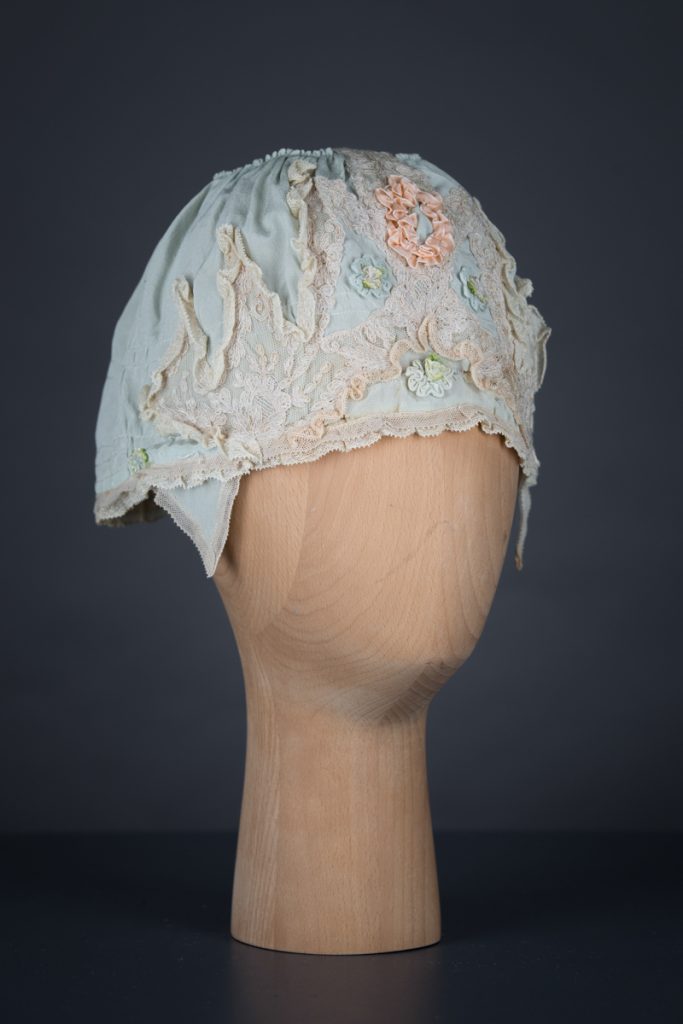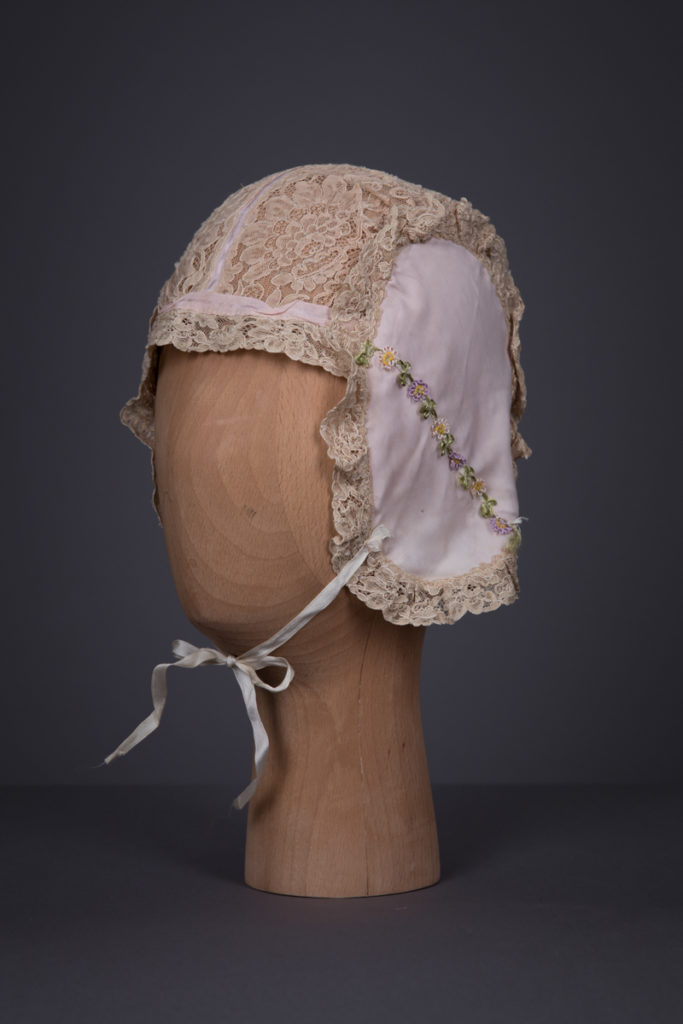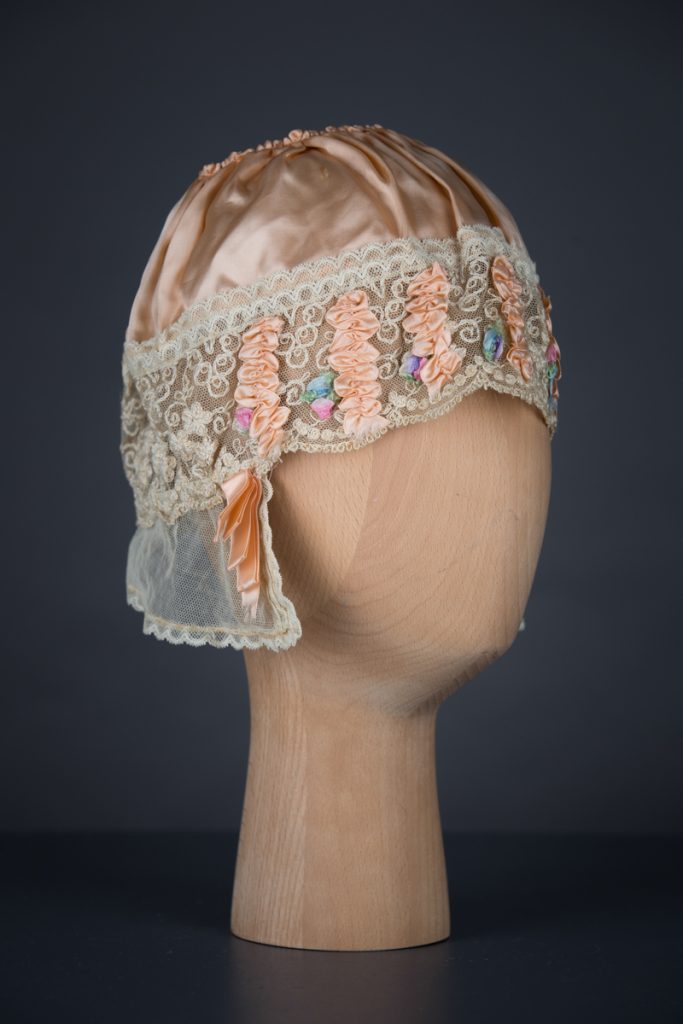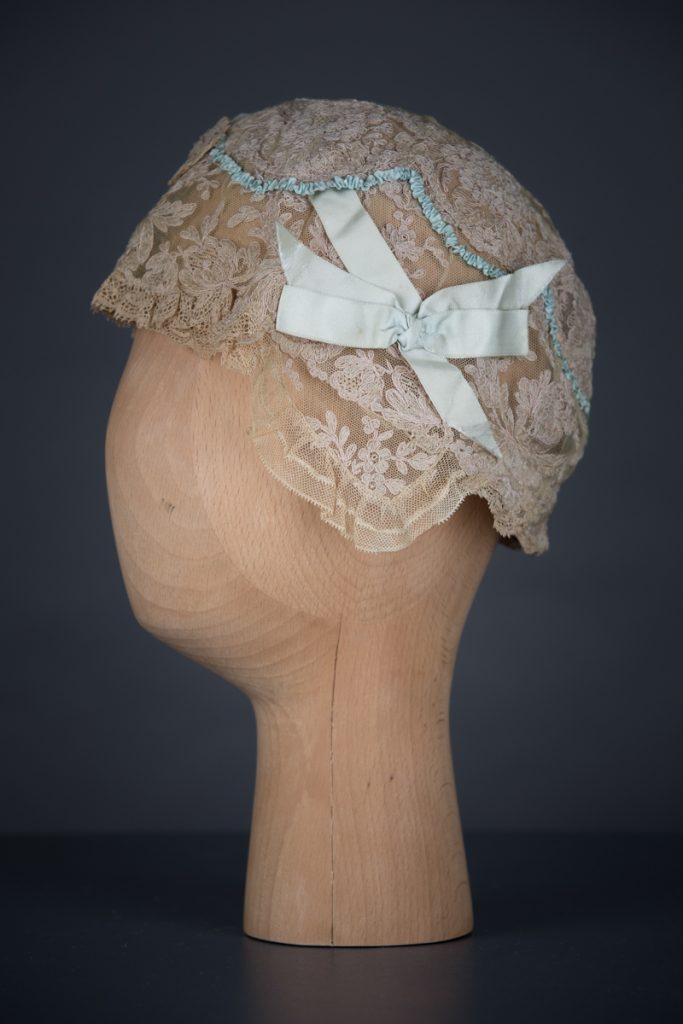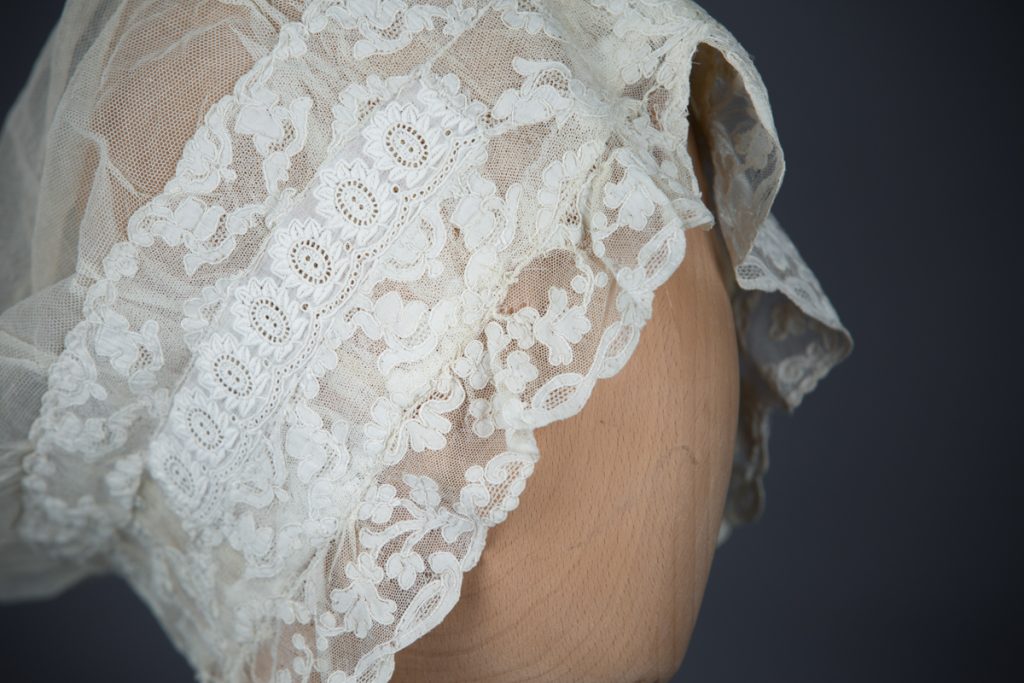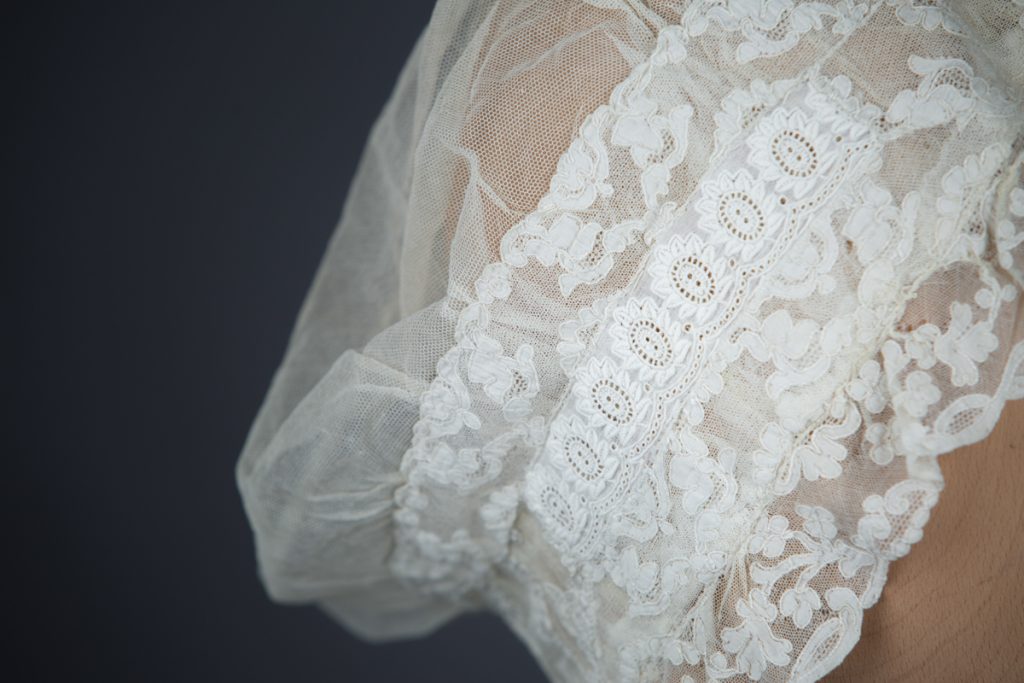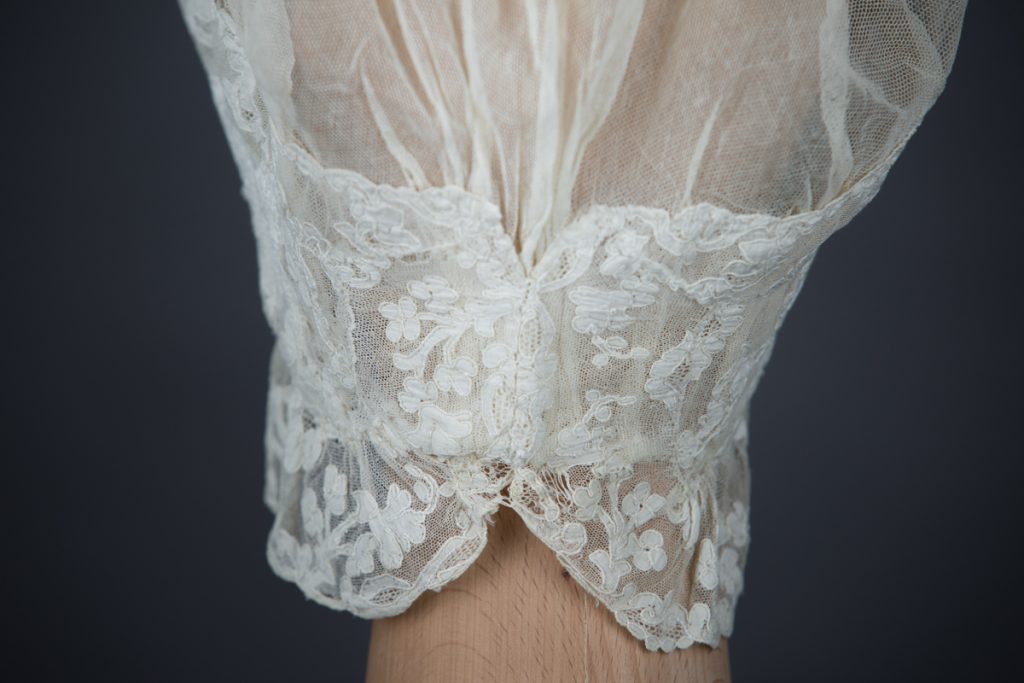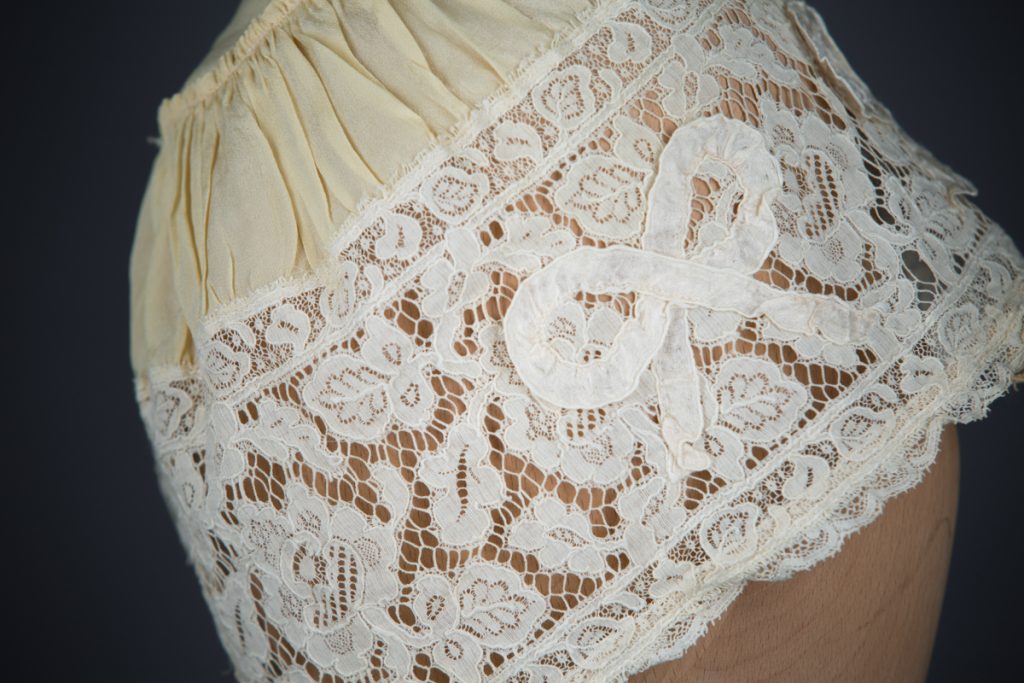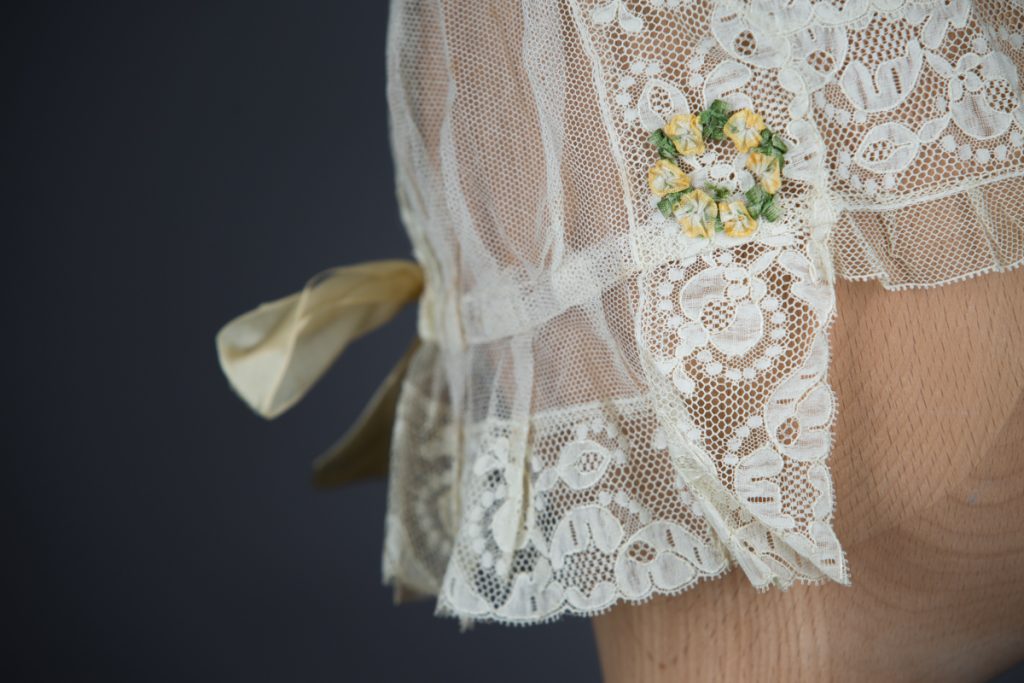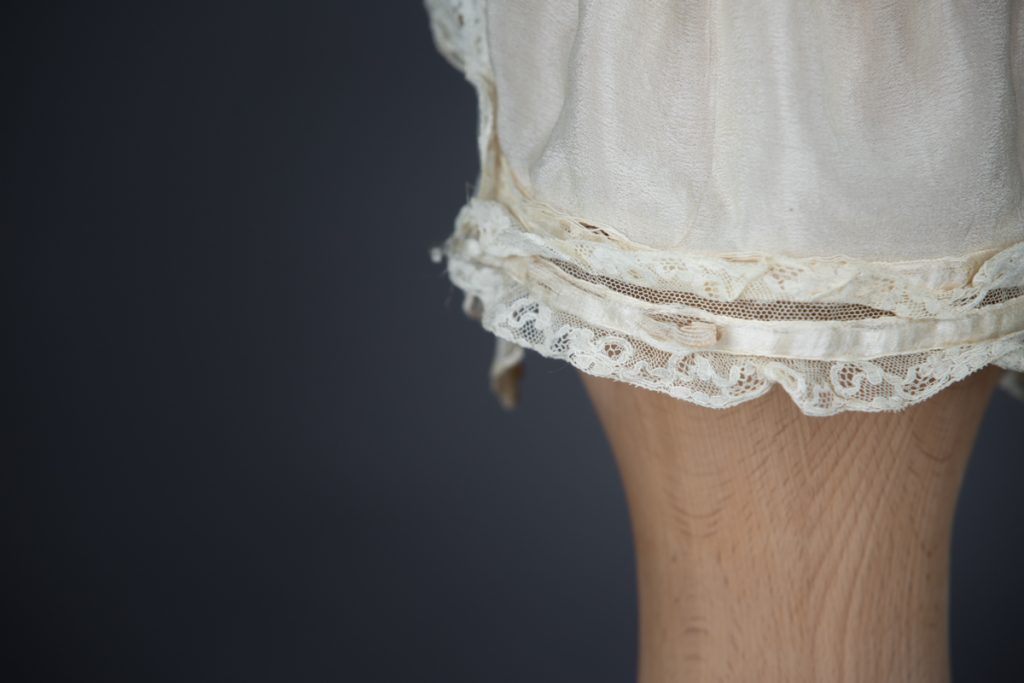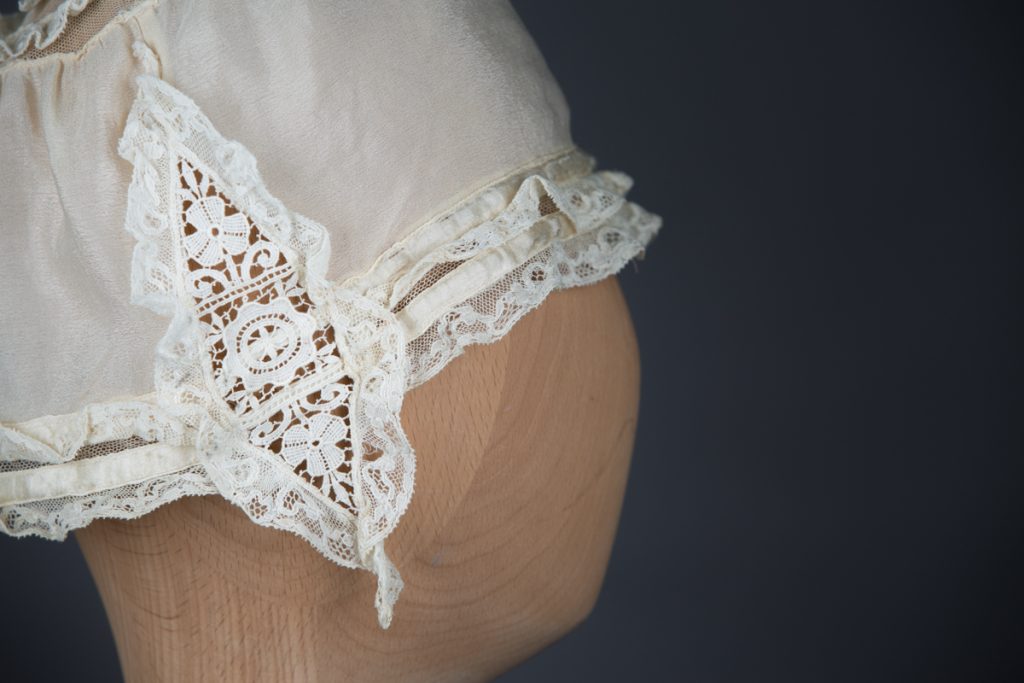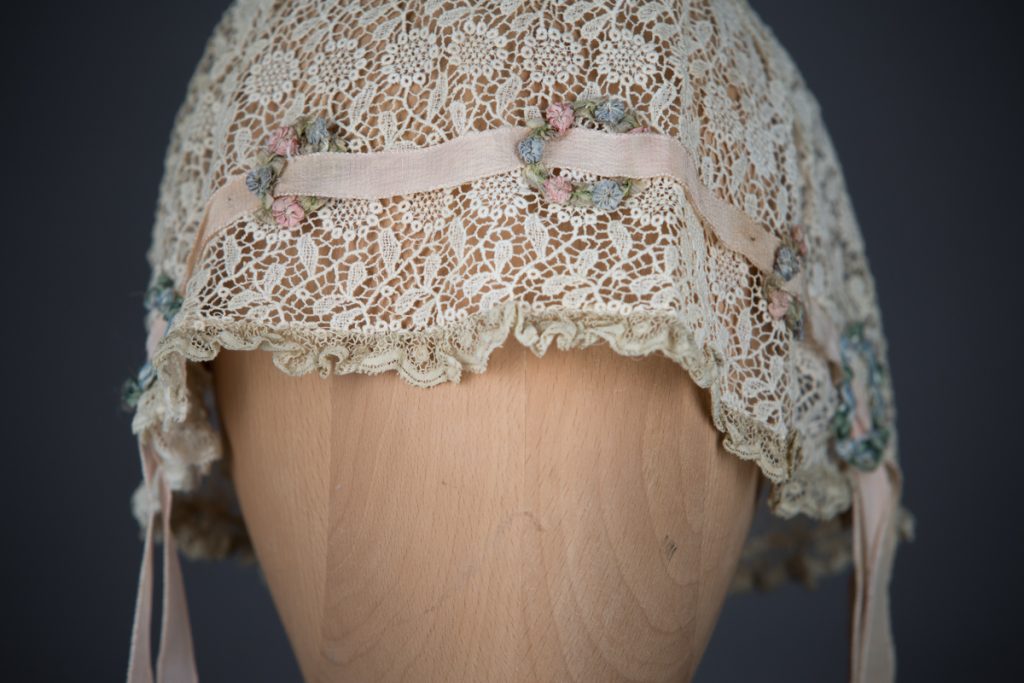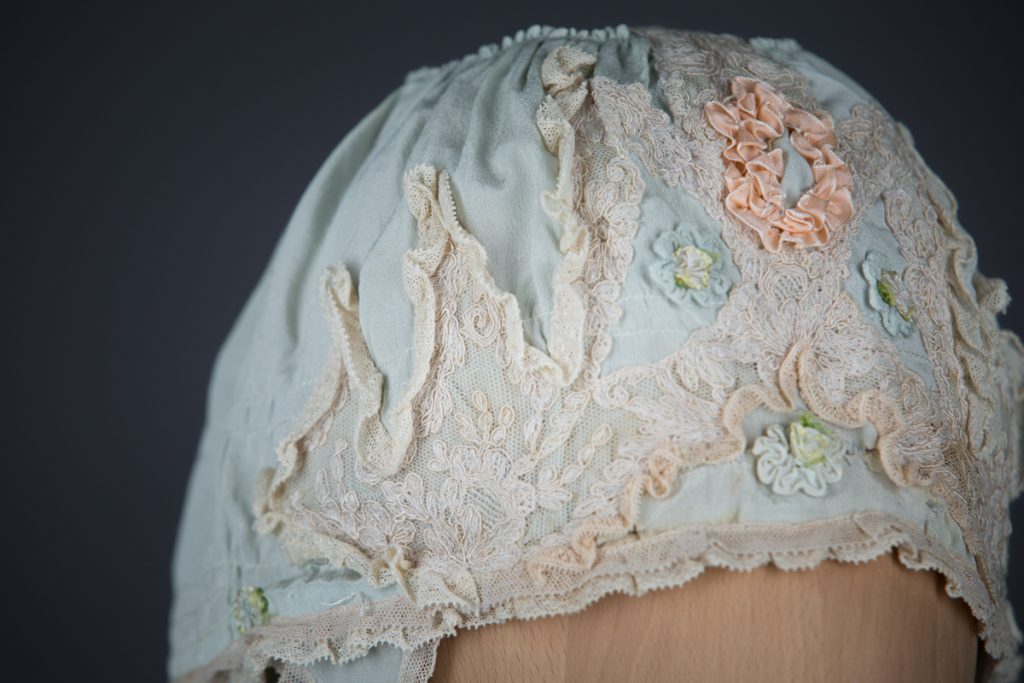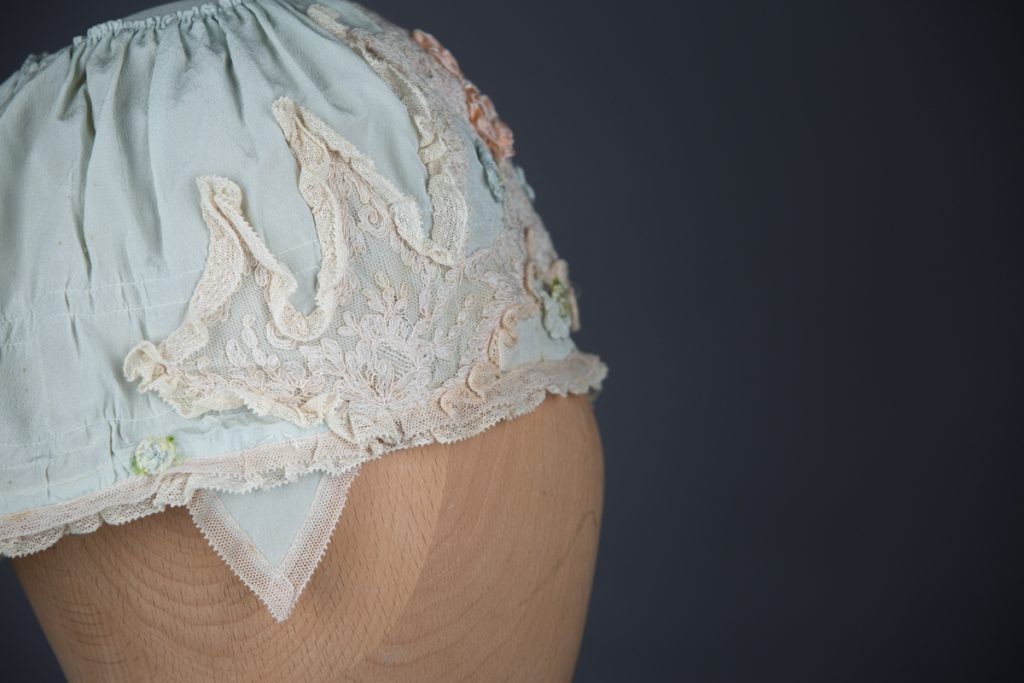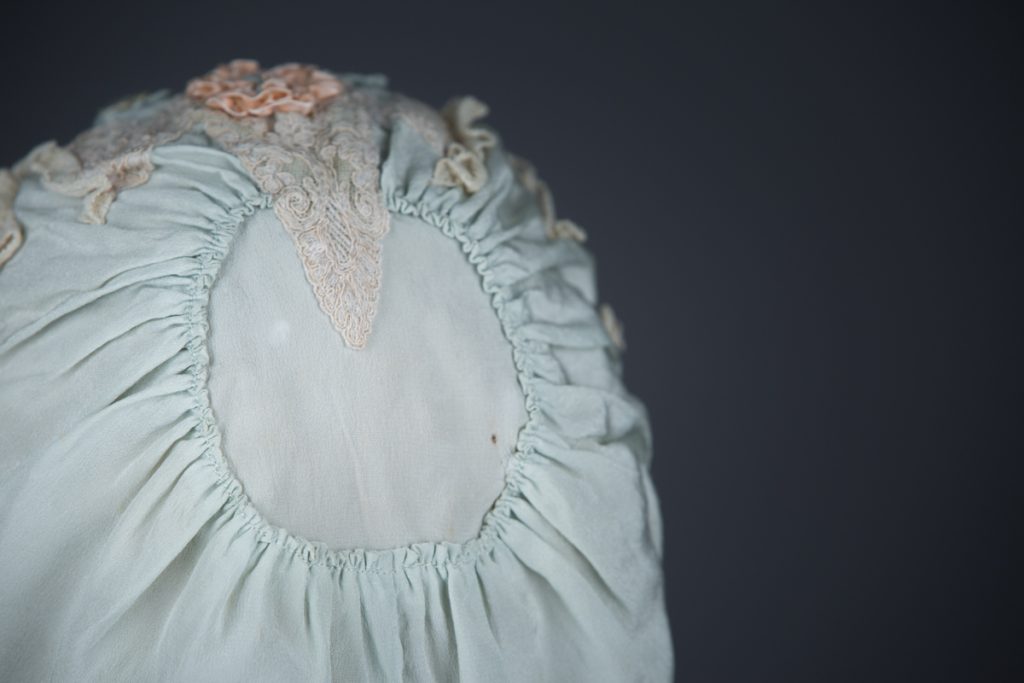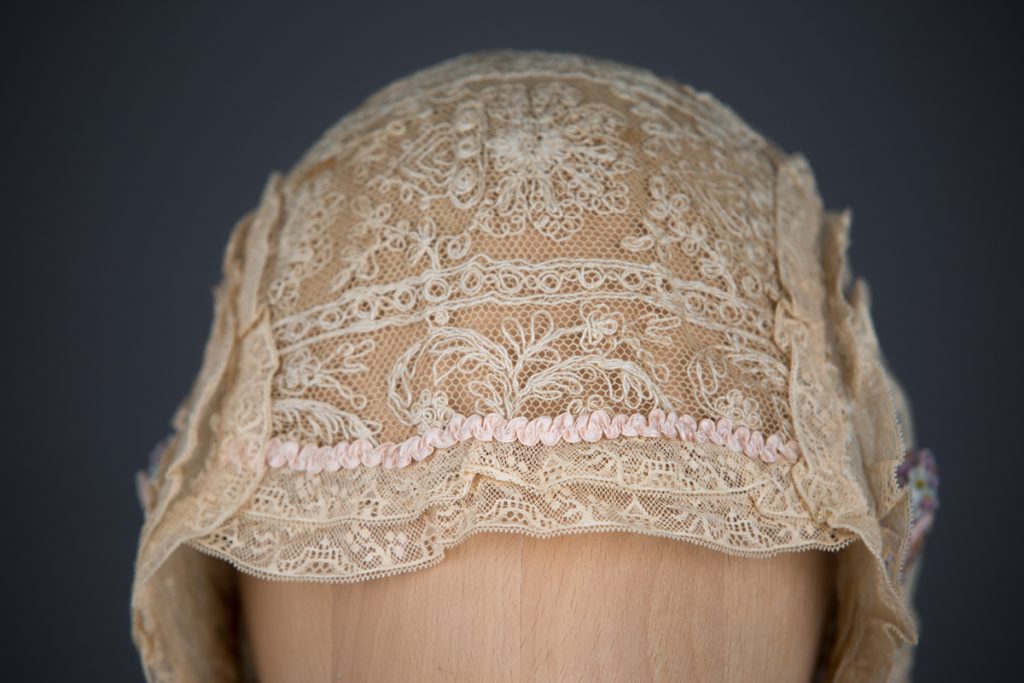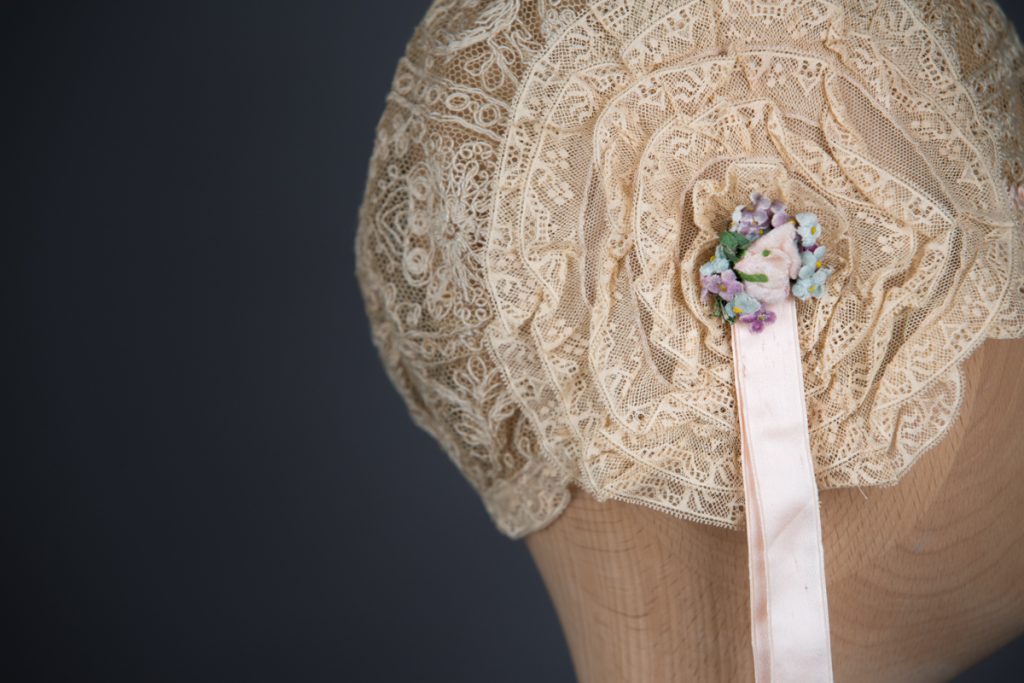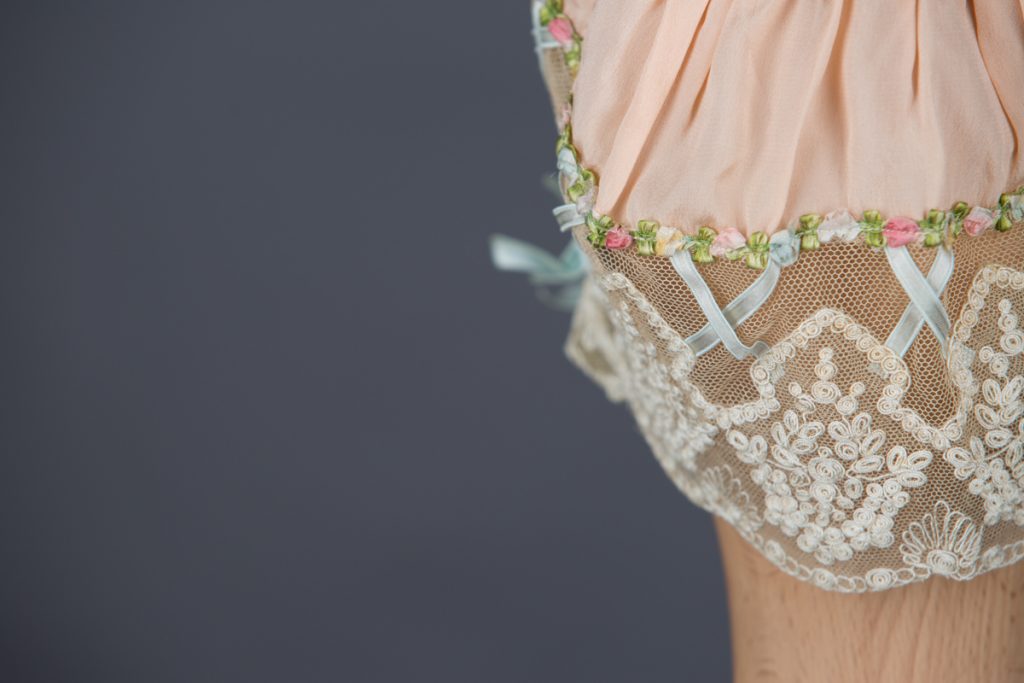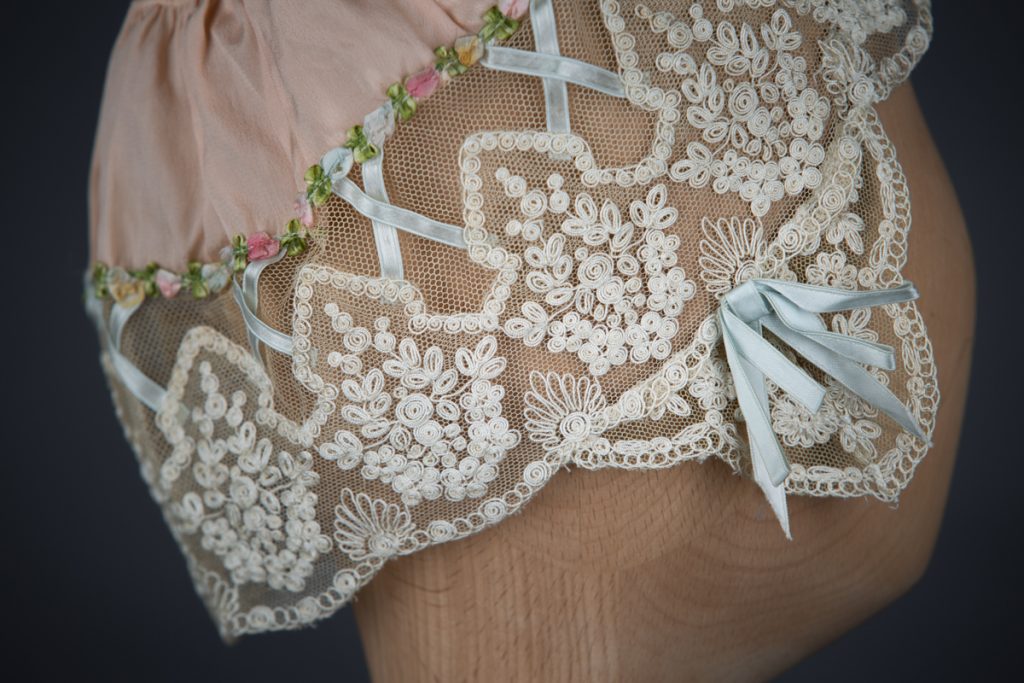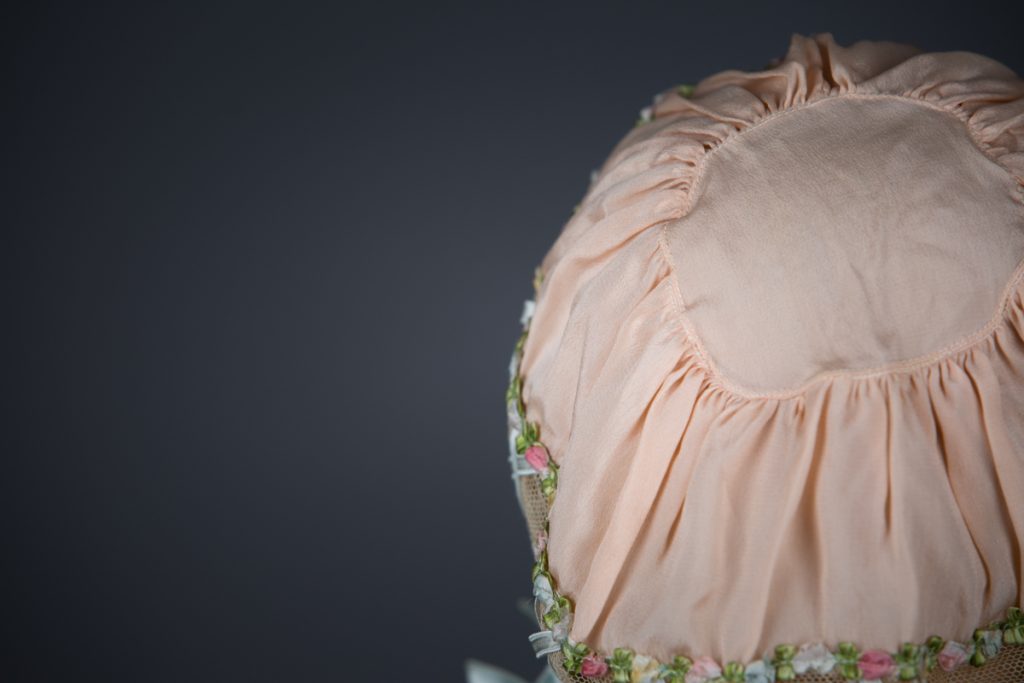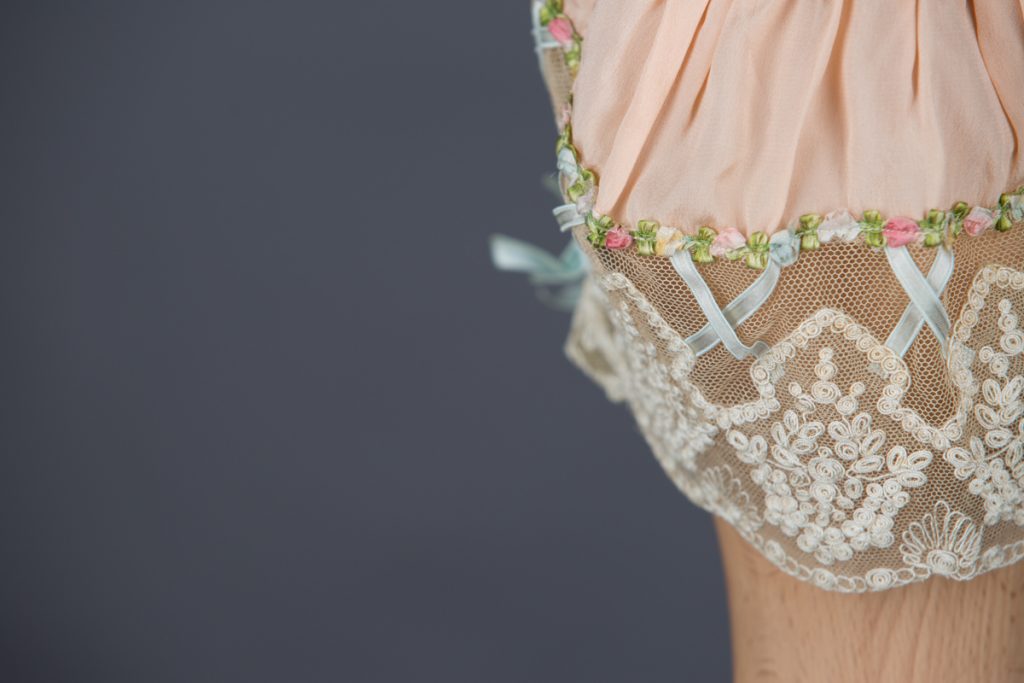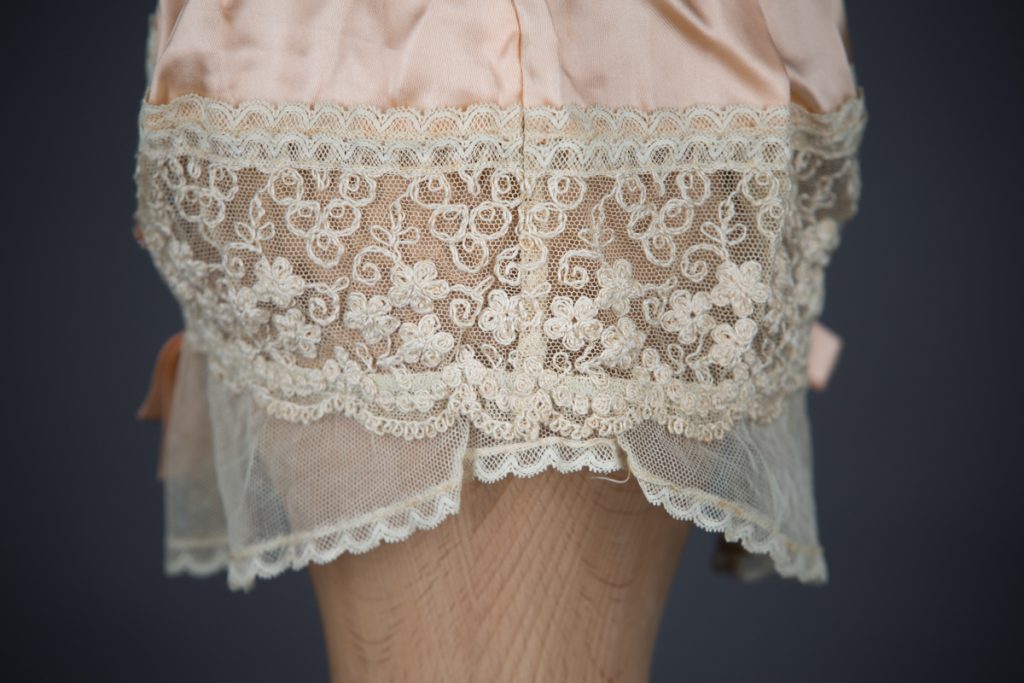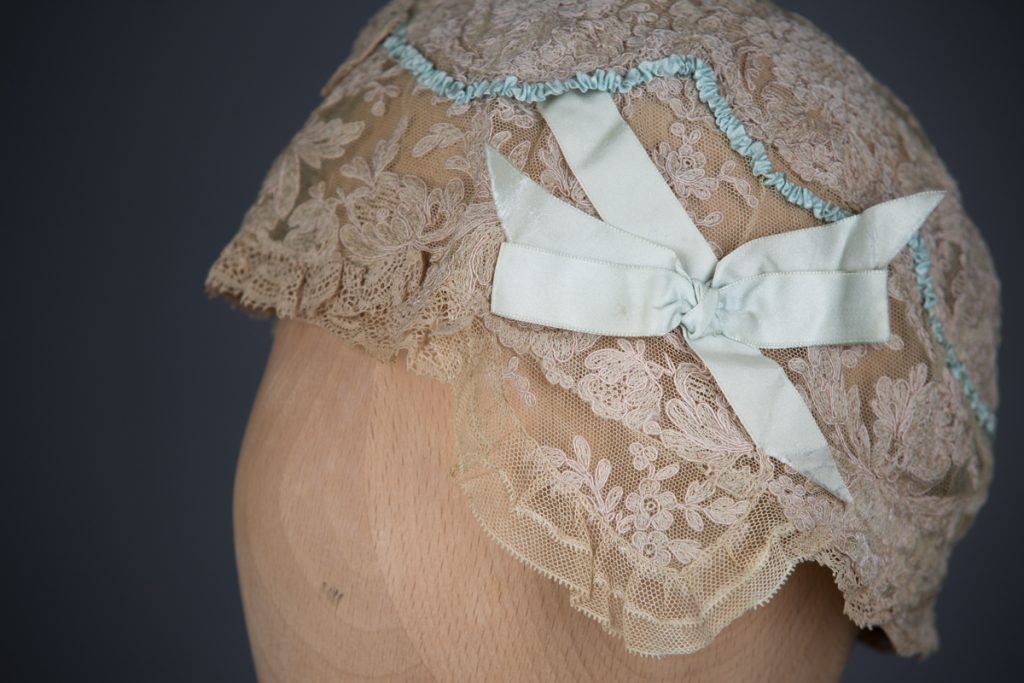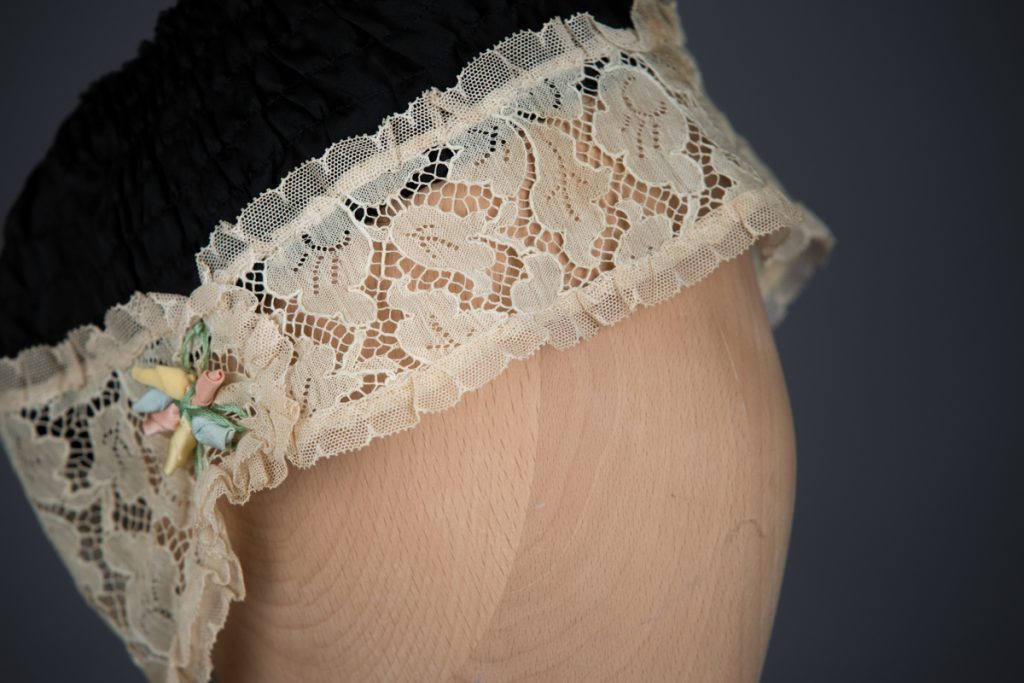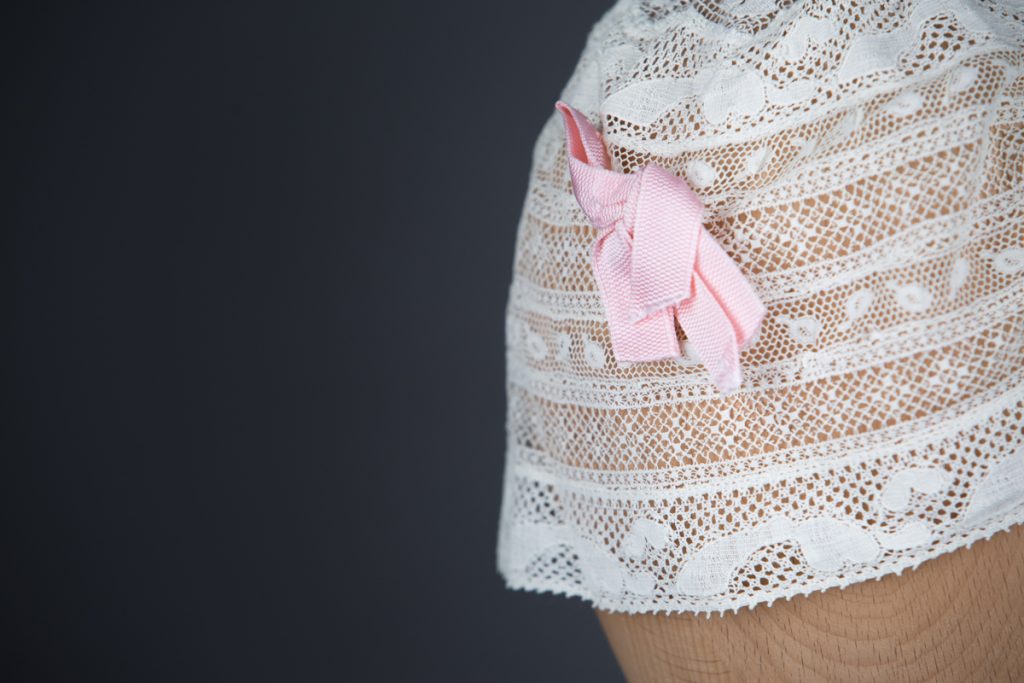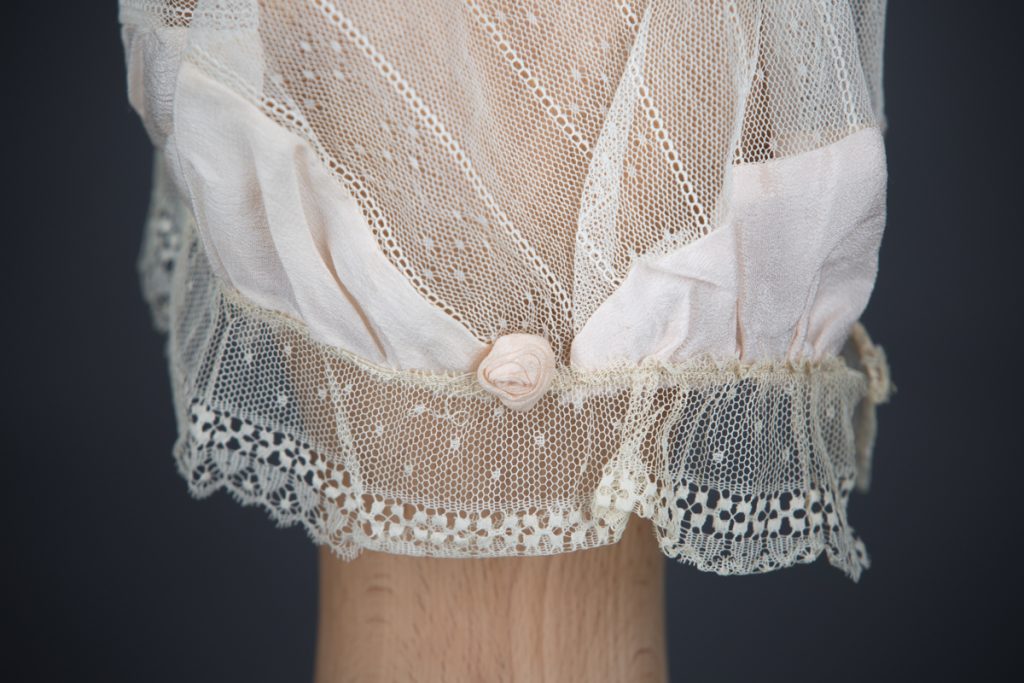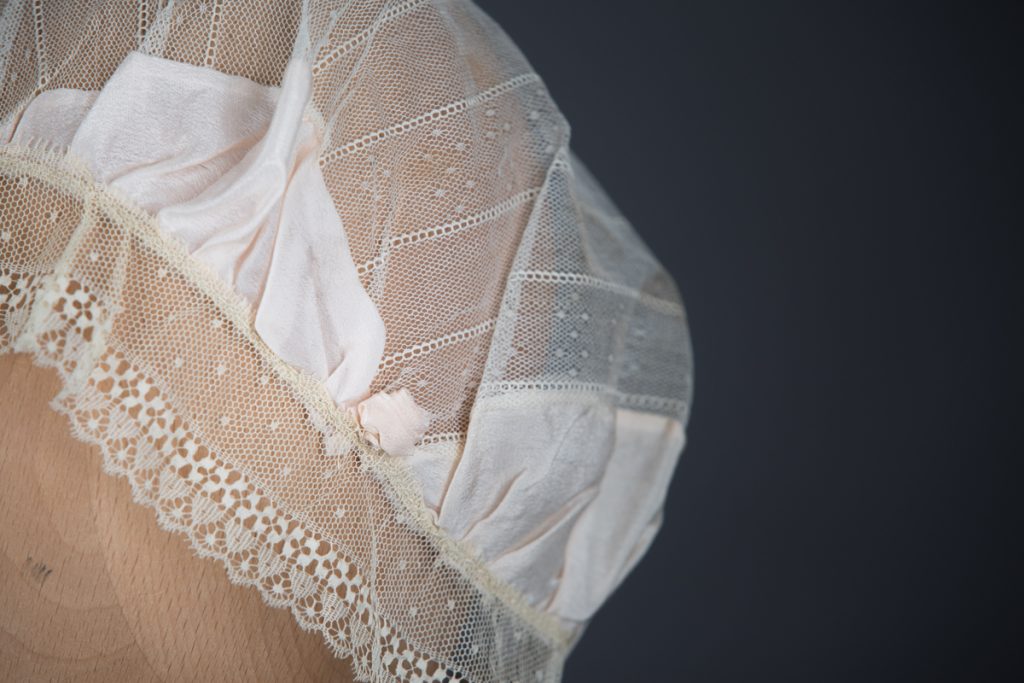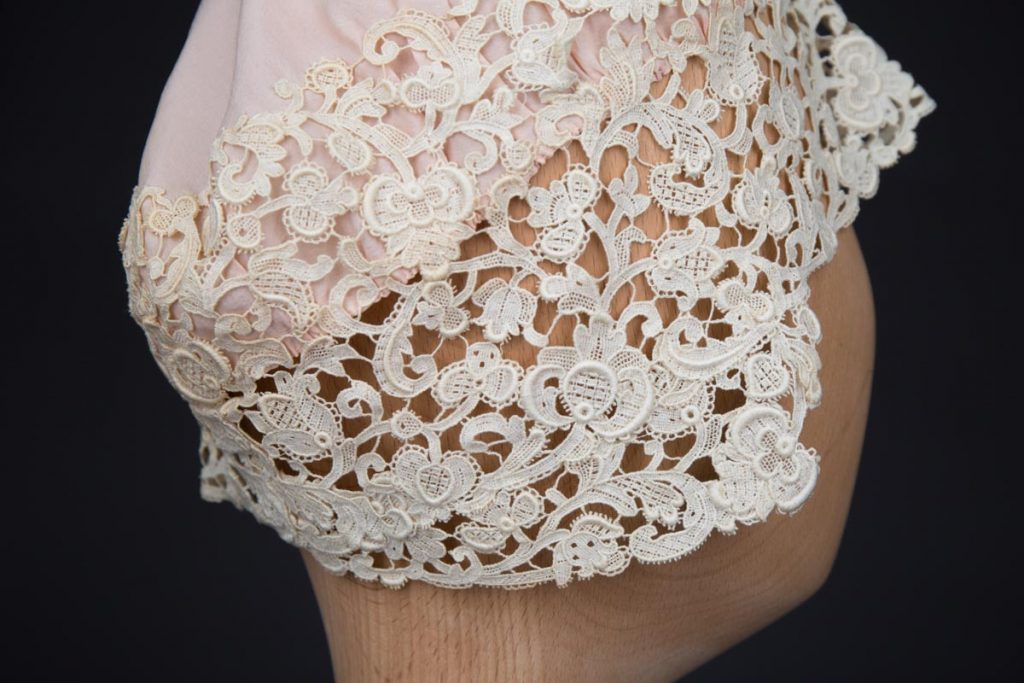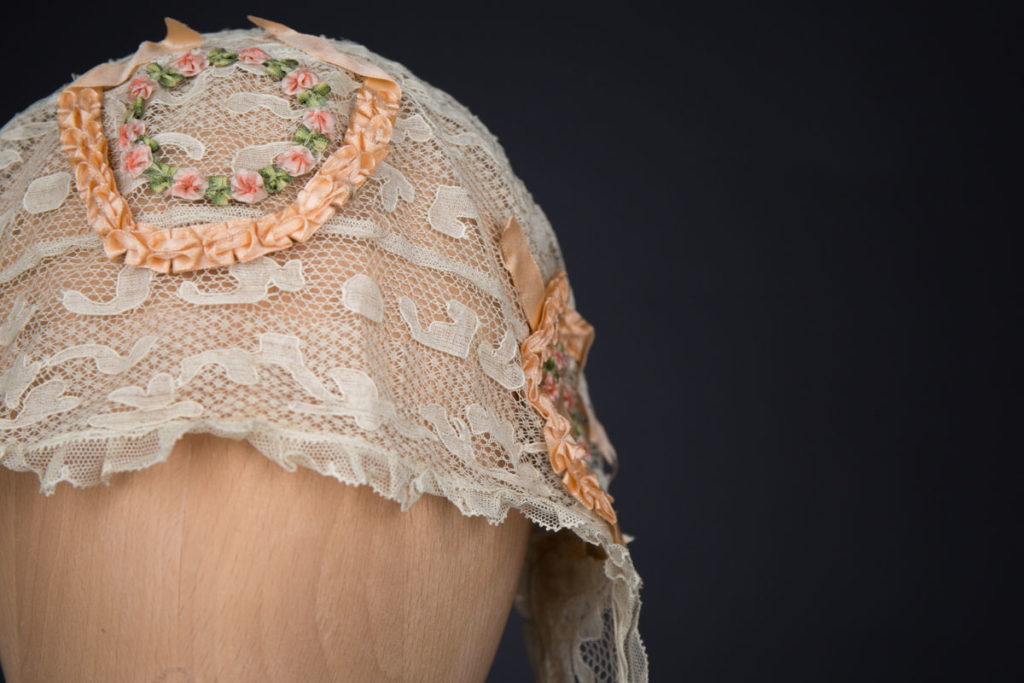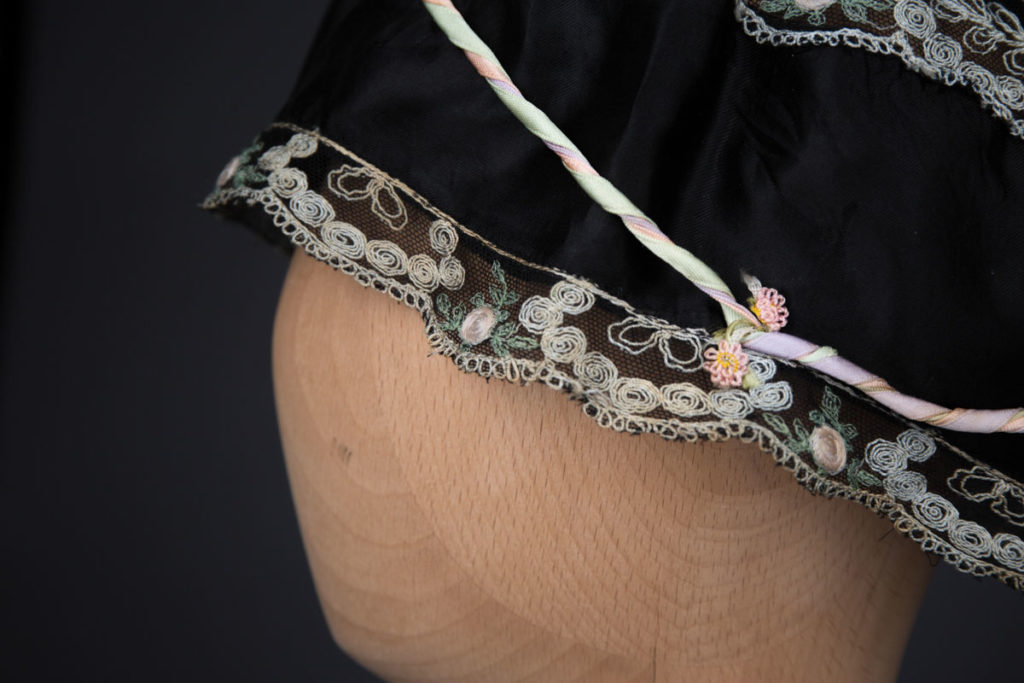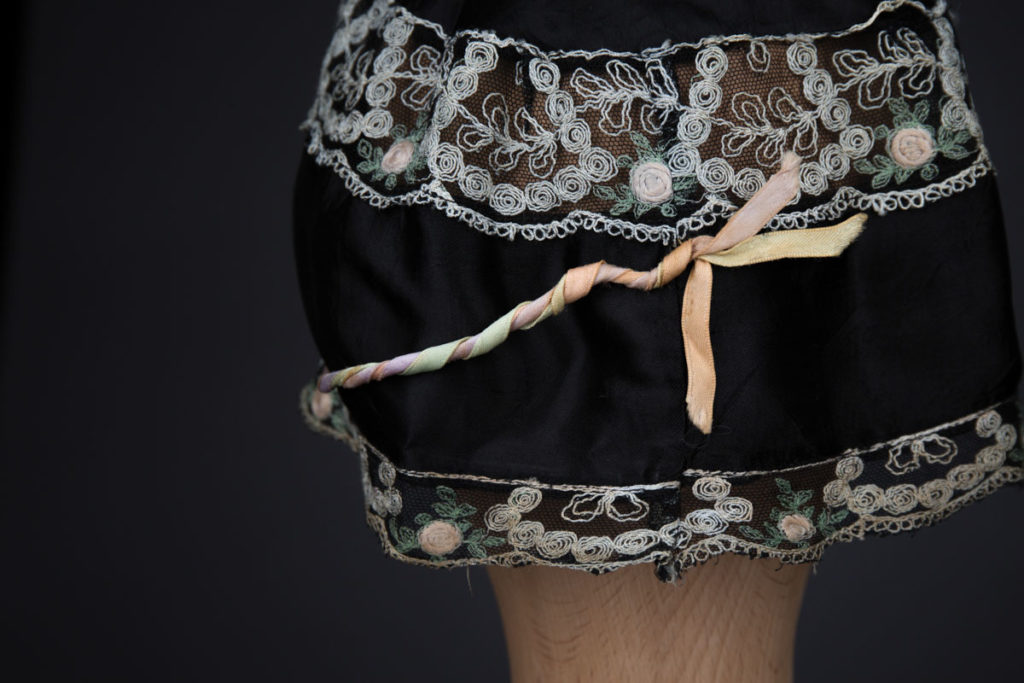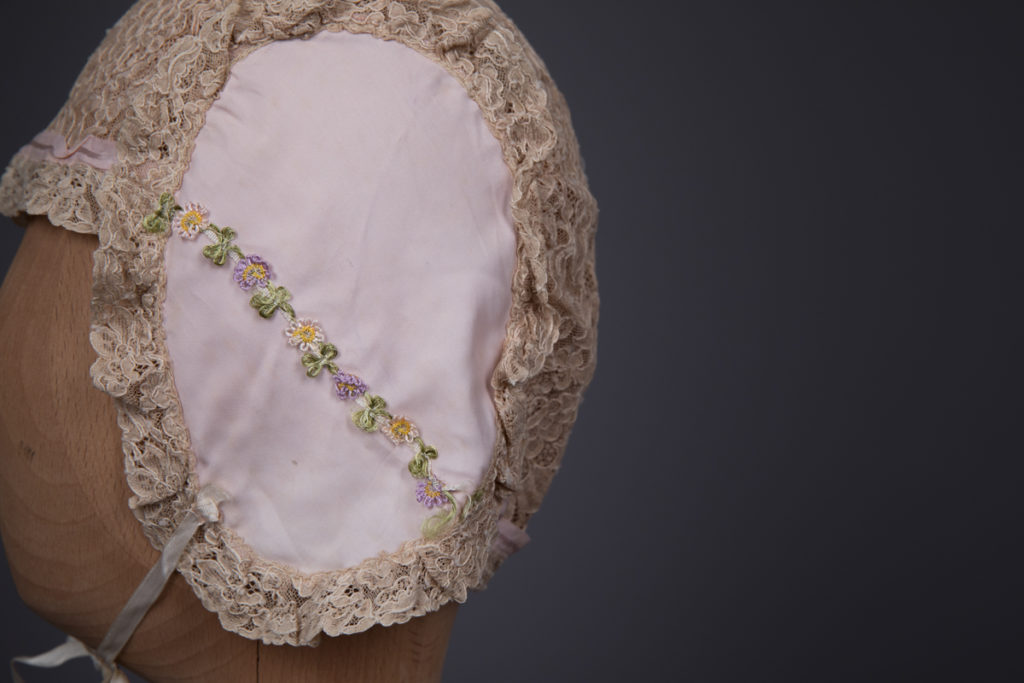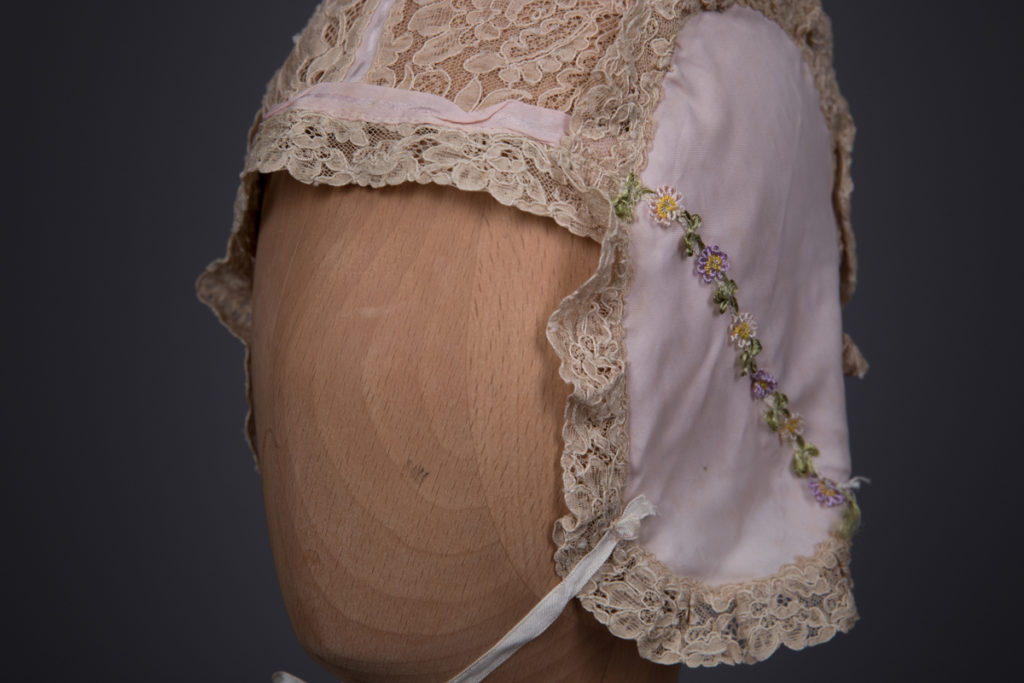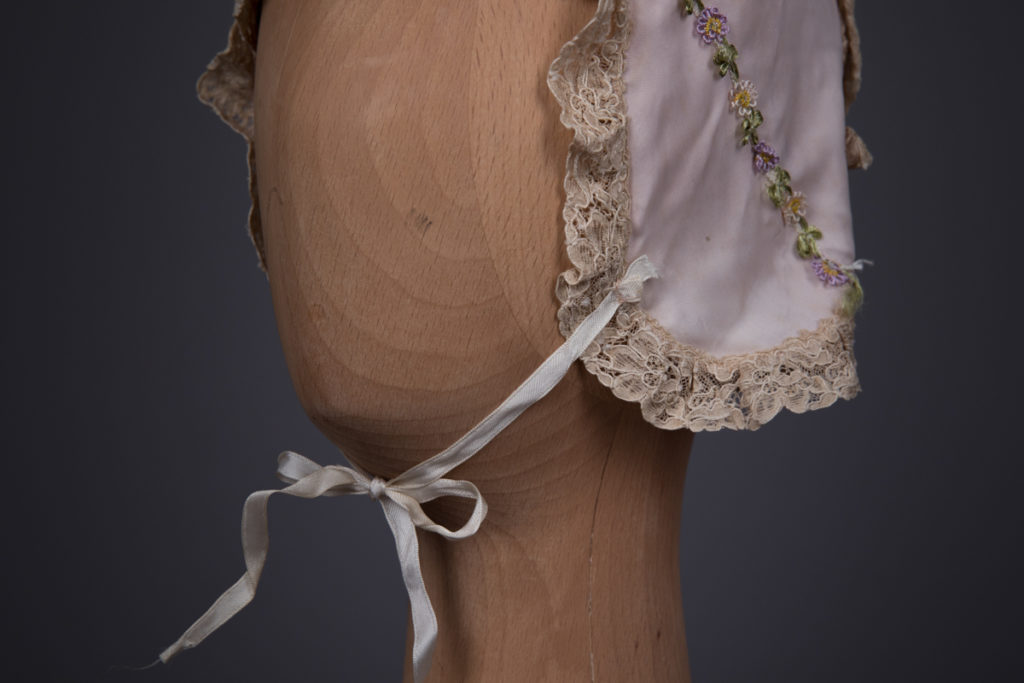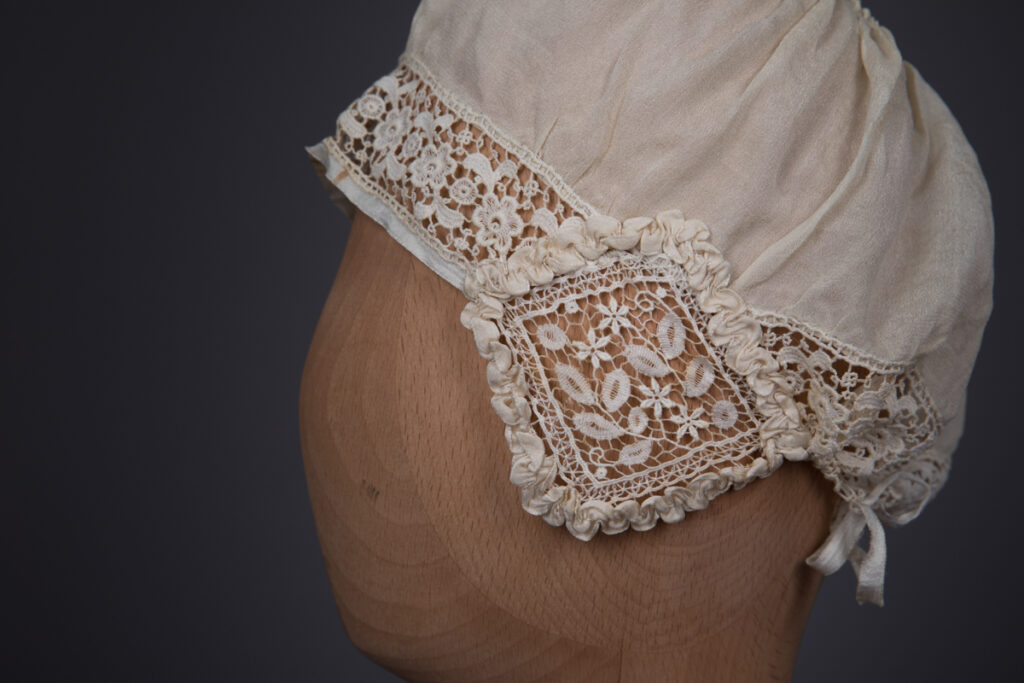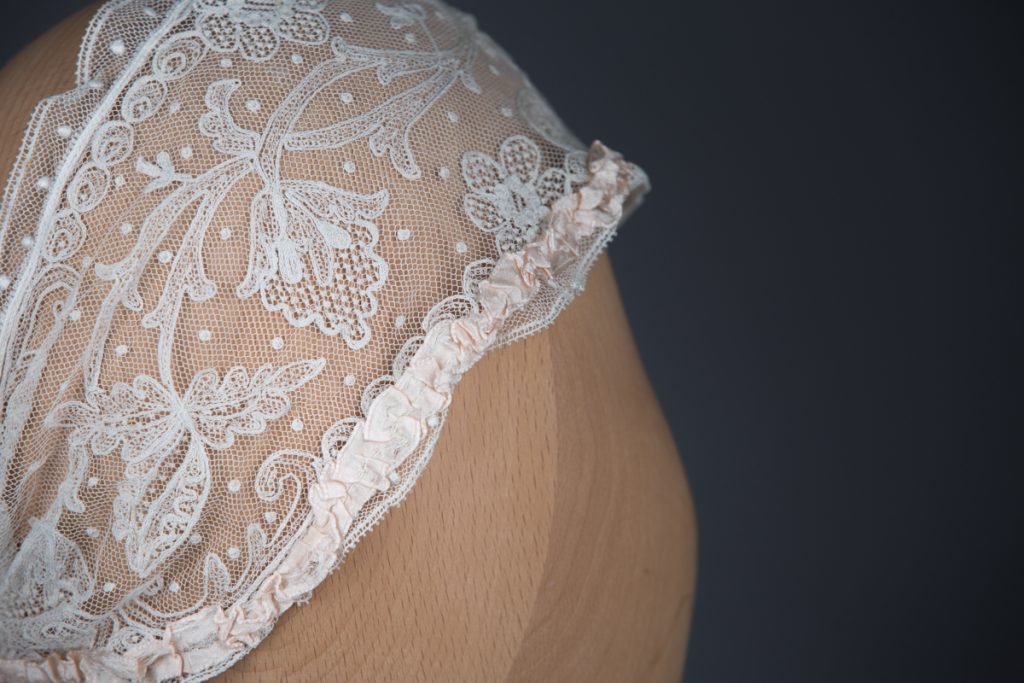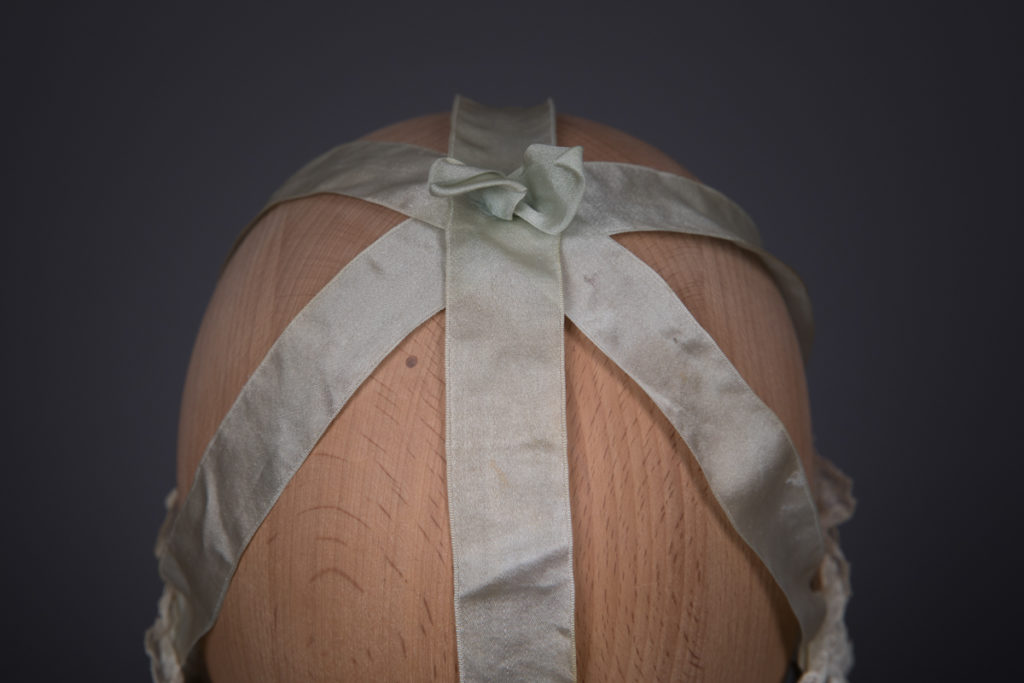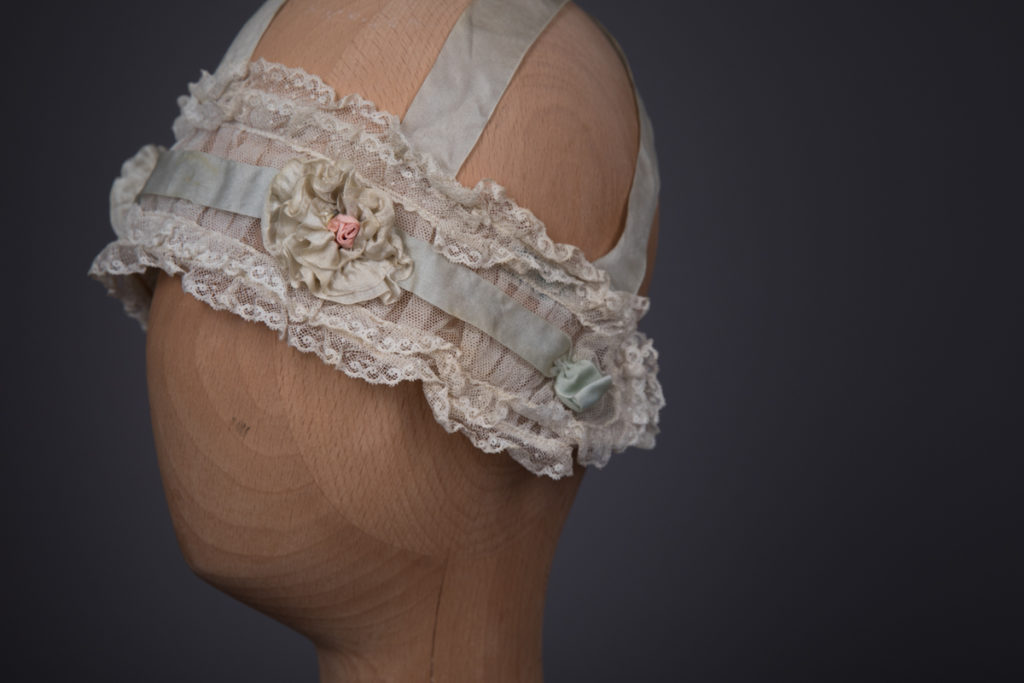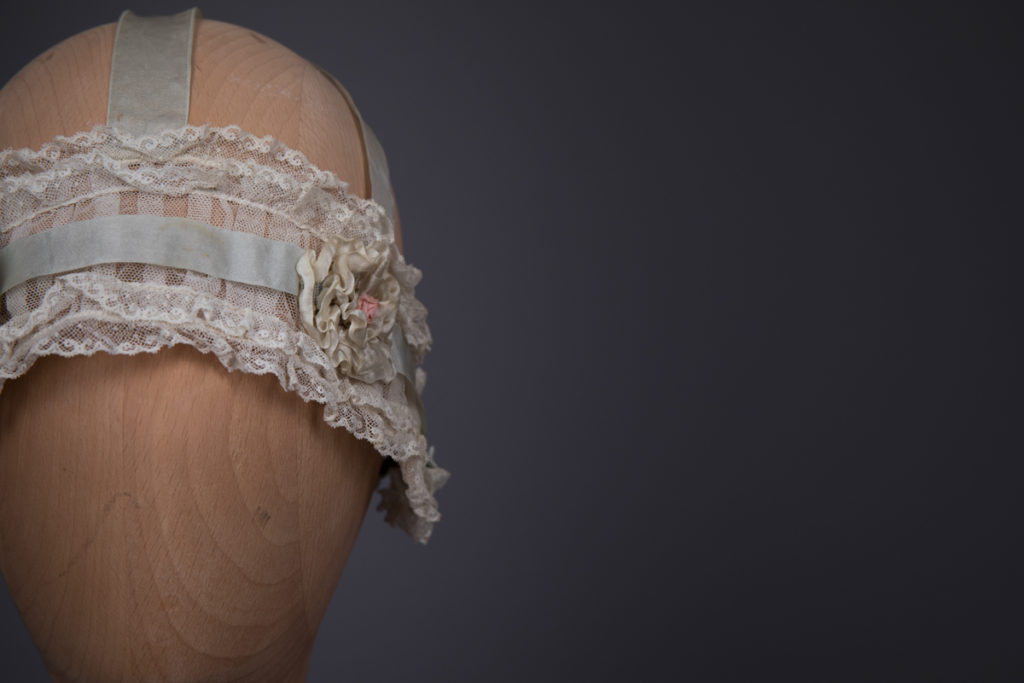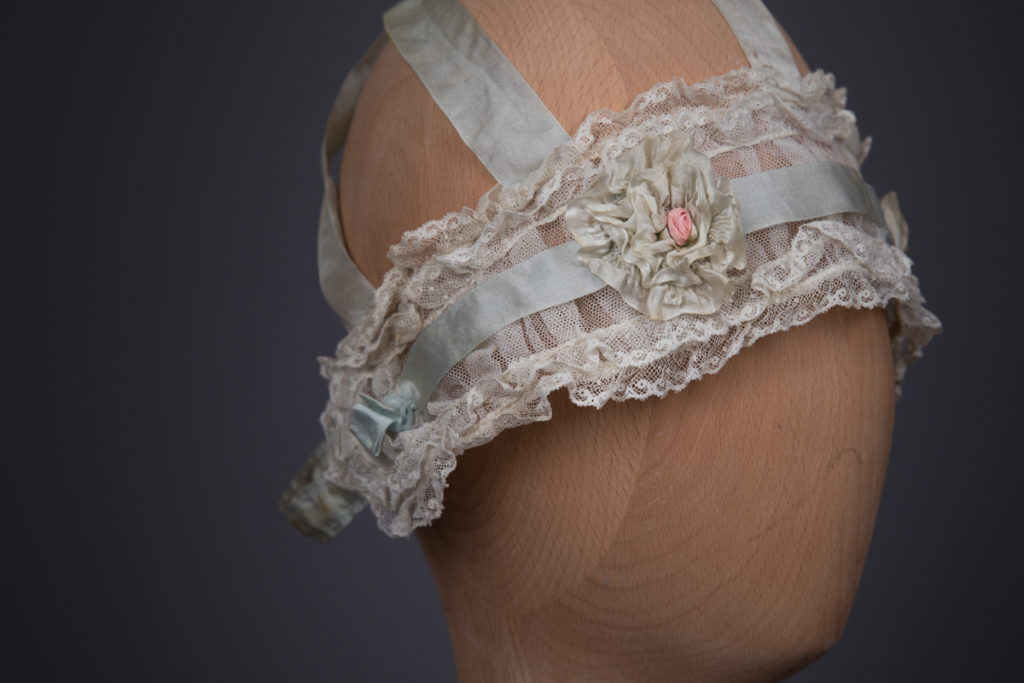By the 1930s the boudoir cap had shrunk in size and exposed more hair than in the 1920s. In November of 1930 the Manchester Guardian predicted that the boudoir cap “is coming in again” and informed their readers about future trends like the use of white velvet (Manchester Guardian, 24 Nov 1930, 6). But the paper did not mention boudoir caps in any of the following years and Mannin also recalls that “that absurdity didn’t follow us into the Thirties” (Mannin, 70).
It was towards the end of the period that even Vogue itself appears to try and stop the ‘mad cap’ madness it so heavily contributed to in earlier years. In 1926 it included the boudoir cap in their ‘Six Worst Christmas Presents’ and even joked that wearing it could cause divorces. The article closed with the statement that “the number of people who think they are giving lace boudoir caps as Christmas presents to their friends, whereas, in reality, they are giving them divorces, is too colossally fatiguing to consider.” (Vogue (New York), Dec 15, 1926, 49). By the 1950s the style had become strongly associated with the 1920s as is visible in the BBC show’s ‘A time to remember’ ‘1920-1929’ episode. There, a young woman wearing a boudoir cap is shown sitting at her vanity to demonstrate to viewers how different life had been 30 years ago.
Caps and nets worn to protect the hair and preserve hairstyles over-night, nonetheless, stayed in use throughout the remaining twentieth century. Nowadays satin-lined caps for example continue to be popular among women with curly hair and are worn as a protective style at night.
